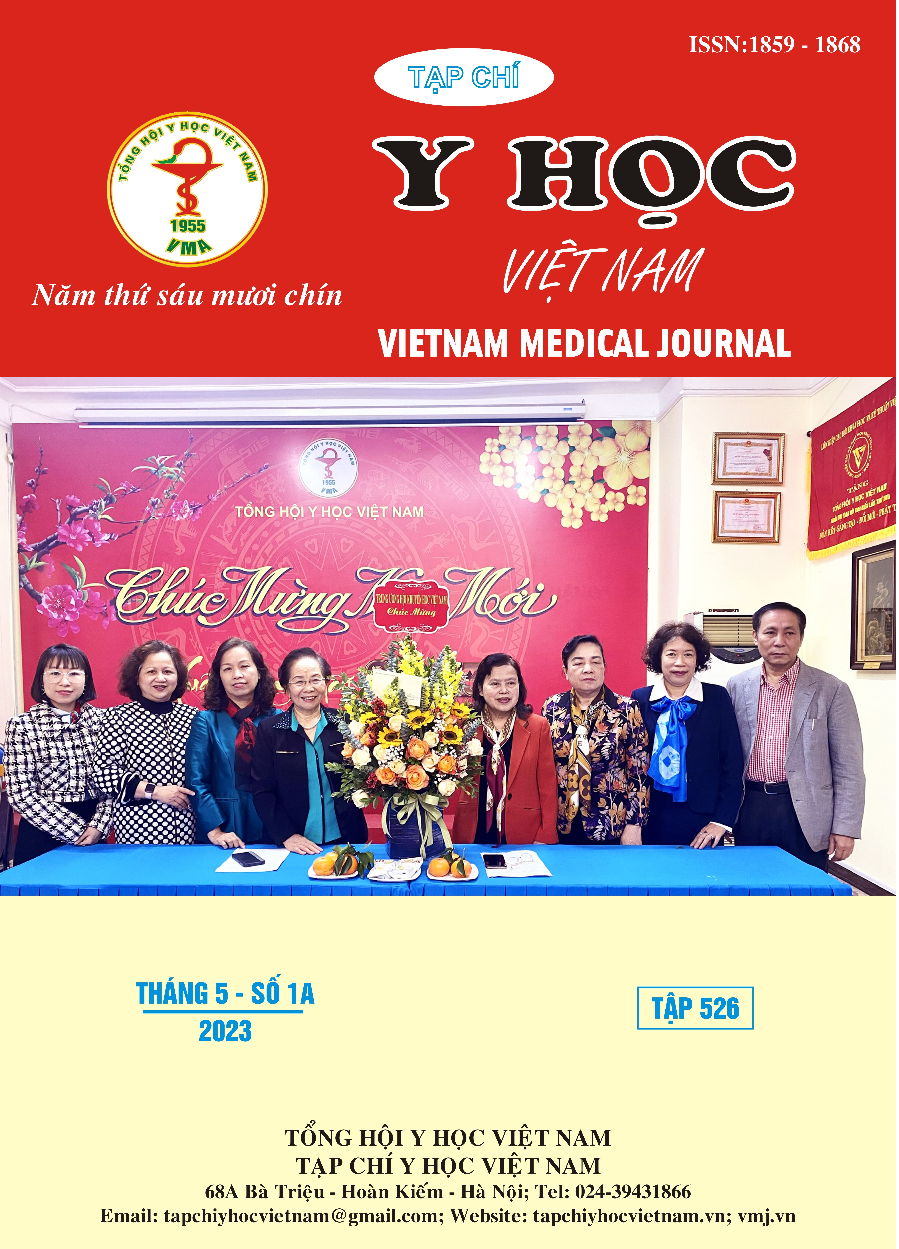ROLE OF MAGNETIC RESONANCE IMAGING IN DIAGNOSING CHOLEDOCHAL CYSTS IN CHILDREN
Main Article Content
Abstract
Objective: Description the imaging characteristics of choledochal cyst on Magnetic Resonance Imaging (MRI). Determination the merits of MRI in diagnosing choledochal cysts in children. Methods: 43 patients were diagnosed choledochal cyst postoperative and had Ultrasound and Magnetic Resonance Cholangiopancreatography (MRCP) from 1 January 2020 to 30 July 2022 in City Children’s Hospital. MRI results were compared with intraoperative findings. Methods: Retrospective series of cases. Results: In 43 patients choledochal cyst including 32 girls and 11 boys: Mean age of 54,5 ± 42,7 months (1 months – 14 years). Female/male=2,9/1. The most common clinical symptoms were abdominal pain 79,1% and vomiting 53,5%. Choledochal cyst on MRI: The type of choledochal cysts (according to Todani): only type I (79,1%) (20,9%) and type IV. Type of dilatation: cystic dilatation (81,4%), fusiform dilatation (18,6%); Mean measurement: 34,8 ± 25,8mm; Stone in cyst (37,2%); intrahepatoc duct dilatation (39,5%). On MRI, there are 7 cases (16,3%) anomalous pancreaticobiliary junction (APBJ), 5 cases (11,6%) hepatic duct stenosis and 3 cases (7%) anatomic variants of the biliary tree. The sensitivity, specificity was 100%; 87,8% in diagnosing APBJ, 100%; 97,4% in diagnosing hepatic duct stenosis and 100%, 100% in diagnosing anatomic variants of the biliary tree. Conclusion: MRCP has a high value in detecting APBJ, diagnosing hepatic duct stenosis and anatomic variants of the biliary tree. Pre-operative MRI should be performed in all of pediatric choledochal cysts patients.
Article Details
Keywords
Magnetic Resonance Cholangiopancretography (MRCP), Choledochal cyst, Abnormal pancreaticobiliary junction, Hepatic duct stenosis, Anatomic variants of the biliary tree
References
2. Moslim MA, Takahashi H, Seifarth FG, al. e. Choledochal Cyst Disease in a Western Center: A 30-Year Experience. J Gastrointest Surg. Aug 2016;20(8):1453-63. doi:10.1007/s11605-016-3181-4
3. Makin E, Davenport M. Understanding choledochal malformation. Arch Dis Child. Jan 2012;97(1):69-72. doi:10.1136/adc.2010.195974
4. Huỳnh Giới. Kết quả phẫu thuật nội soi cắt nang ống mật chủ ở trẻ em dựa trên chẩn đoán hình ảnh cộng hưởng từ mật-tụy. Đại học Y Dược Thành phố Hồ Chí Minh; 2013.
5. Liem NT, Pham HD, Dung le A, Son TN, Vu HM. Early and intermediate outcomes of laparoscopic surgery for choledochal cysts with 400 patients. J Laparoendosc Adv Surg Tech A. Jul-Aug 2012;22(6):599-603. doi:10.1089/ lap.2012.0018
6. Nguyễn Thị Ngọc Nga, Võ Tấn Đức, Nguyễn Thị Phương Loan. Đặc điểm hình ảnh nang ống mật chủ ở trẻ em trên siêu âm và cộng hưởng từ. Y học TP Hồ Chí Minh. 2019;23(1)
7. Lee HC, Yeung CY, Chang PY, Sheu JC, Wang NL. Dilatation of the biliary tree in children: sonographic diagnosis and its clinical significance. Journal of ultrasound in medicine: official journal of the American Institute of Ultrasound in Medicine. Mar 2000;19(3):177-82; quiz 183-4. doi:10.7863/jum.2000.19.3.177
8. Trương Nguyễn Uy Linh. Nghiên cứu đặc điểm bệnh lý nang ống mật chủ và đánh giá kết quả cắt nang triệt để ở trẻ em. Luận án Tiến sĩ y học. Đại học Y dược Thành phố Hồ Chí Minh; 2008.
9. Huang CT, Lee HC, Chen WT, Jiang CB, Shih SL, Yeung CY. Usefulness of magnetic resonance cholangiopancreatography in pancreatobiliary abnormalities in pediatric patients. Pediatr Neonatol. Dec 2012;52(6):332-6. doi:10.1016/j.pedneo.2011.08.006
10. Saito T. Use of preoperative, 3-dimensional magnetic resonance cholangiopancreatography in pediatric choledochal cysts. Surgery. Apr 2011; 149(4):569-75. doi:10.1016/j.surg.2010.11.004


